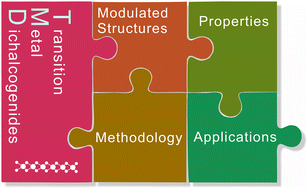Structure modulation of two-dimensional transition metal chalcogenides: recent advances in methodology, mechanism and applications
Abstract
Together with the development of two-dimensional (2D) materials, transition metal dichalcogenides (TMDs) have become one of the most popular series of model materials for fundamental sciences and practical applications. Due to the ever-growing requirements of customization and multi-function, dozens of modulated structures have been introduced in TMDs. In this review, we present a systematic and comprehensive overview of the structure modulation of TMDs, including point, linear and out-of-plane structures, following and updating the conventional classification for silicon and related bulk semiconductors. In particular, we focus on the structural characteristics of modulated TMD structures and analyse the corresponding root causes. We also summarize the recent progress in modulating methods, mechanisms, properties and applications based on modulated TMD structures. Finally, we demonstrate challenges and prospects in the structure modulation of TMDs and forecast potential directions about what and how breakthroughs can be achieved.



 Please wait while we load your content...
Please wait while we load your content...